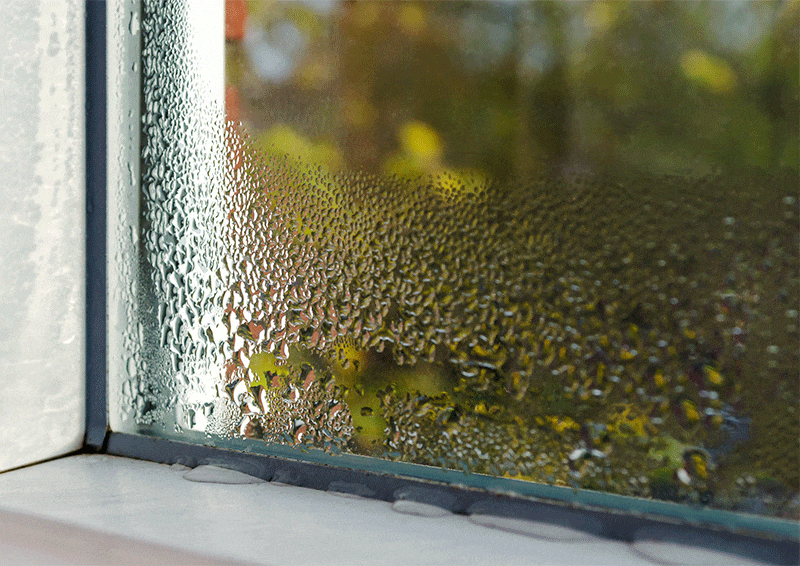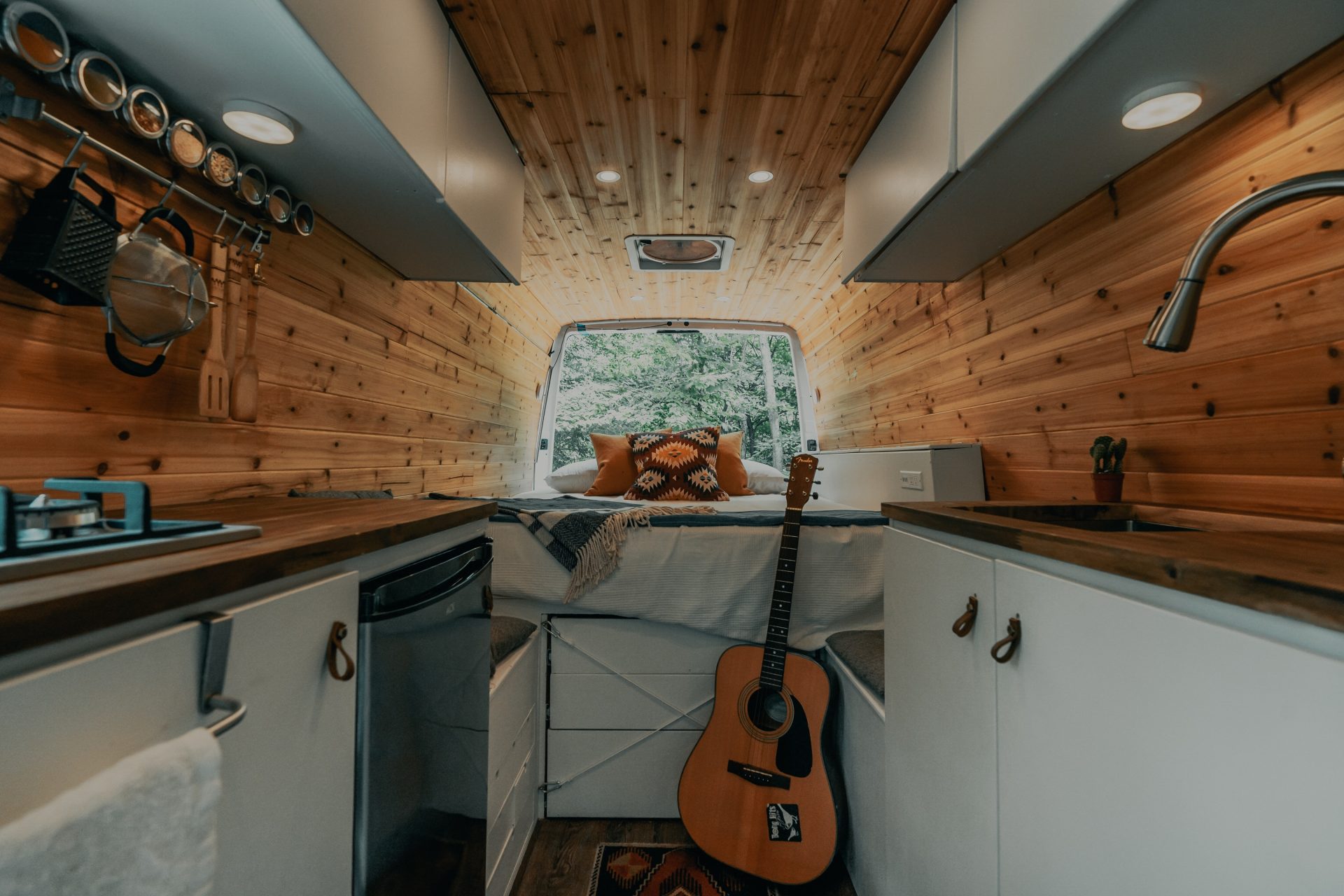In today’s world, where clean air is becoming a luxury, finding effective solutions to ensure the health and well-being of our loved ones has become a top priority. That’s where whole house air purification comes into play. By implementing this sustainable technology, we can create a haven of fresh, clean air in our homes, free from pollutants and allergens that can harm our respiratory systems.
Imagine a home where every breath you take feels rejuvenating, where the air you inhale is as pure as the crisp mountain breeze. Whole house air purification is not just another fleeting trend; it’s a game-changer in the realm of indoor air quality. This innovative solution goes beyond traditional air filters, offering a comprehensive approach to eliminate contaminants and improve the overall air quality in every corner of your home.
From removing dust particles and pet dander to tackling volatile organic compounds and odors, this cutting-edge technology ensures that your home is a sanctuary for clean, healthy air. Join us as we delve into the world of whole house air purification, exploring its benefits, debunking common myths, and uncovering the latest advancements in sustainable technology that can transform the air you breathe.
What Is Whole House Air Purification?
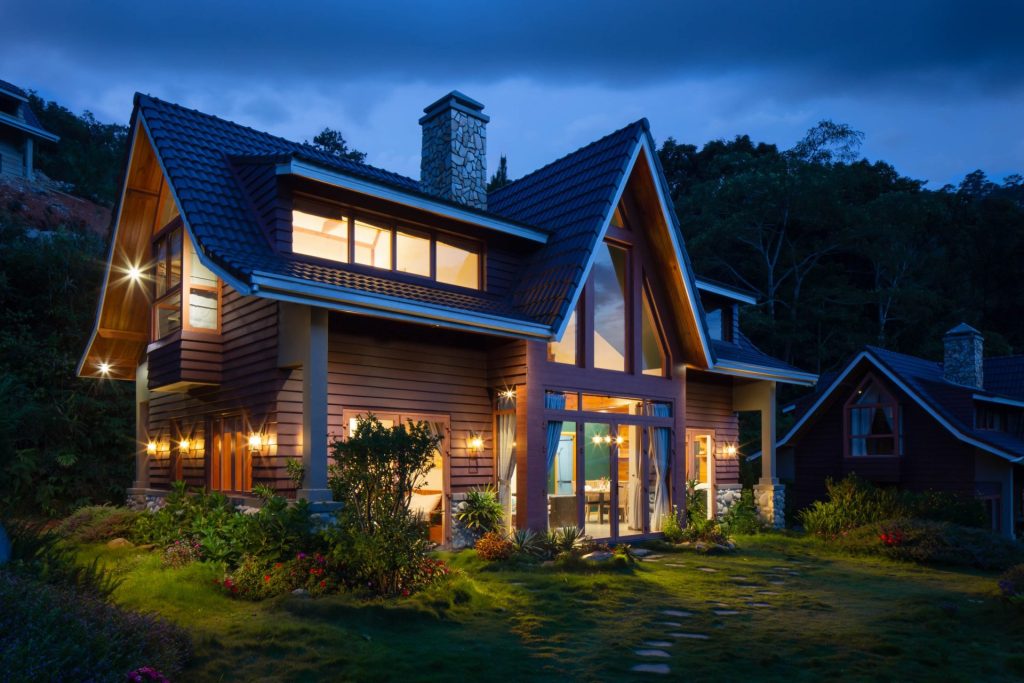
In the quest for clean and healthy indoor air, whole house air purification has emerged as a comprehensive solution. This groundbreaking technology ensures that every nook and cranny of your home is protected from airborne pollutants, allergens, and contaminants, resulting in an environment that promotes good health and well-being.
Whole House Air Purification vs Portable Room Air Purifiers For Coverage
While portable or room air purifiers are effective in cleaning the air within a confined space, they cannot match the coverage provided by whole house air purification. These smaller units are limited in their reach and can only clean the air in a specific room or area. On the other hand, whole house air purification systems are integrated into your HVAC system, allowing them to purify the air in every corner of your home, from the basement to the attic.
Not only does whole house air purification provide comprehensive coverage, but it also ensures consistent and continuous air purification. As the air circulates through your HVAC system, it passes through the purification system, removing harmful particles at every turn. This means that every breath you take within your home is clean and free of pollutants, providing a level of protection that is unmatched by portable or room air purifiers.
Whole House Air Purification vs Portable Room Air Purifiers For Efficiency
One of the key advantages of whole house air purification is its exceptional efficiency. Unlike portable or room air purifiers, which often have limited filtration capabilities, whole house systems utilize advanced technologies such as HEPA filters, UV germicidal lights, and activated carbon filters.
HEPA filters are highly effective in capturing particles as small as 0.3 microns, including dust, pollen, pet dander, and mold spores. UV germicidal lights work by emitting ultraviolet radiation that kills bacteria, viruses, and other microorganisms that may be present in the air. Activated carbon filters are excellent at removing odors and volatile organic compounds (VOCs) from the air.
By combining these technologies, whole house air purification systems provide superior filtration and purification capabilities. They are designed to remove a wide range of pollutants and allergens that can negatively impact your indoor air quality and your health. With their high efficiency, they ensure that you and your loved ones can breathe cleaner, healthier air throughout your entire home.
Related Reading
- Indoor Air Filtration
- How To Increase Humidity In A Room
- Electromagnetic Air Filter
The Advantages of Whole House Air Purification
Clean, fresh air is essential for maintaining a healthy and comfortable living environment. Unfortunately, the air inside our homes is often filled with pollutants such as dust, pet dander, mold spores, and chemicals from cleaning products. Breathing in these contaminants can have a negative impact on our health, leading to allergies, respiratory issues, and other health problems. That’s where a whole-house air purification system comes in. By effectively removing these pollutants from the air, these systems offer a range of benefits that can greatly improve indoor air quality (IAQ) and overall health.
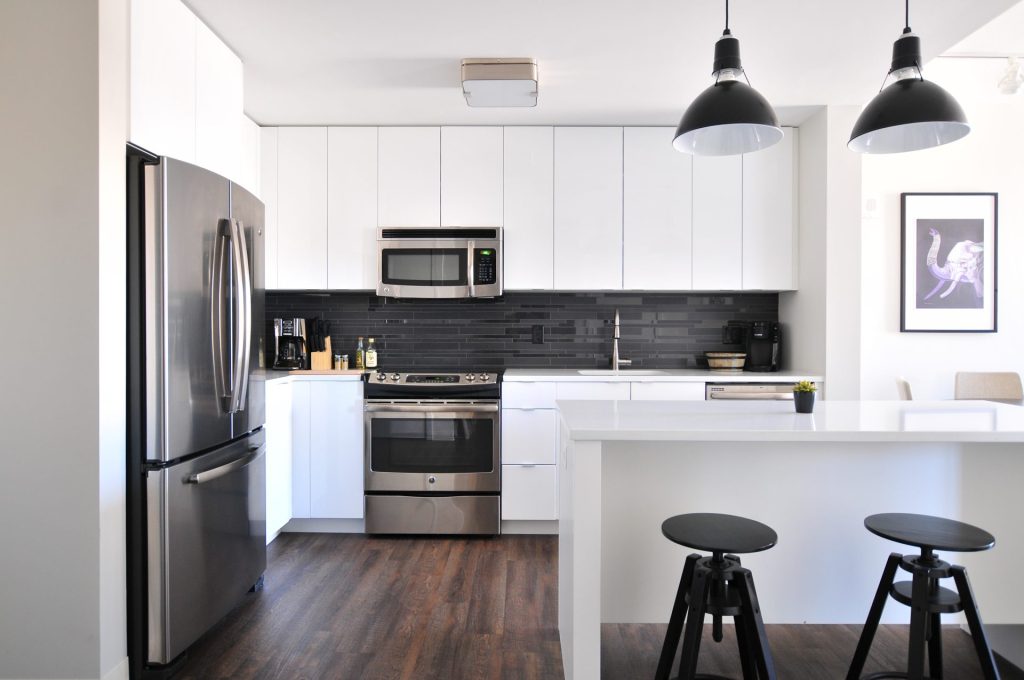
1. Enhanced Indoor Air Quality
The primary advantage of whole-house air purification is its ability to significantly improve indoor air quality. These systems are capable of capturing and removing a wide range of pollutants, including allergens, volatile organic compounds (VOCs), and airborne particles. This means that you can breathe easier and enjoy cleaner, fresher air throughout your entire home.
2. Allergy Relief
Allergies can make life miserable, causing sneezing, coughing, itchy eyes, and other unpleasant symptoms. Whole-house air purification systems can provide much-needed relief by capturing and removing common allergens such as pollen, dust mites, and pet dander. With cleaner air circulating throughout your home, you’ll experience fewer allergy flare-ups and enjoy a more comfortable living environment.
3. Asthma Management
Asthma is a chronic respiratory condition that can be triggered by various environmental factors, including air pollution. For individuals with asthma, breathing in polluted air can lead to coughing, wheezing, chest tightness, and difficulty breathing. By removing asthma triggers such as dust, mold spores, and pet dander, whole-house air purification systems can help manage asthma symptoms and improve overall respiratory health.
4. Odor Elimination
Unpleasant odors are not only bothersome, but they can also be a sign of indoor air pollution. Cooking smells, pet odors, and chemical fumes from cleaning products can linger in the air and make your home less inviting. Whole-house air purification systems can effectively neutralize and eliminate these odors, leaving your home smelling fresh and clean.
5. Protection Against Harmful Chemicals
Indoor air can be filled with harmful chemicals emitted by household products, furniture, and building materials. These chemicals, known as VOCs, can have both short-term and long-term health effects. Whole-house air purification systems are equipped with activated carbon filters that are specifically designed to capture and remove VOCs from the air. This provides an added layer of protection against these harmful substances and helps ensure a healthier indoor environment.
Implementing a whole-house air purification system offers numerous benefits for improved indoor air quality and overall health. From enhanced IAQ to allergy relief, asthma management, odor elimination, and protection against harmful chemicals, these systems provide a comprehensive solution for cleaner, fresher air throughout your home. Don’t compromise on the air you breathe – invest in a whole-house air purification system and experience the difference it can make for your health and well-being.
4 Types of Whole House Air Filters and How They Work
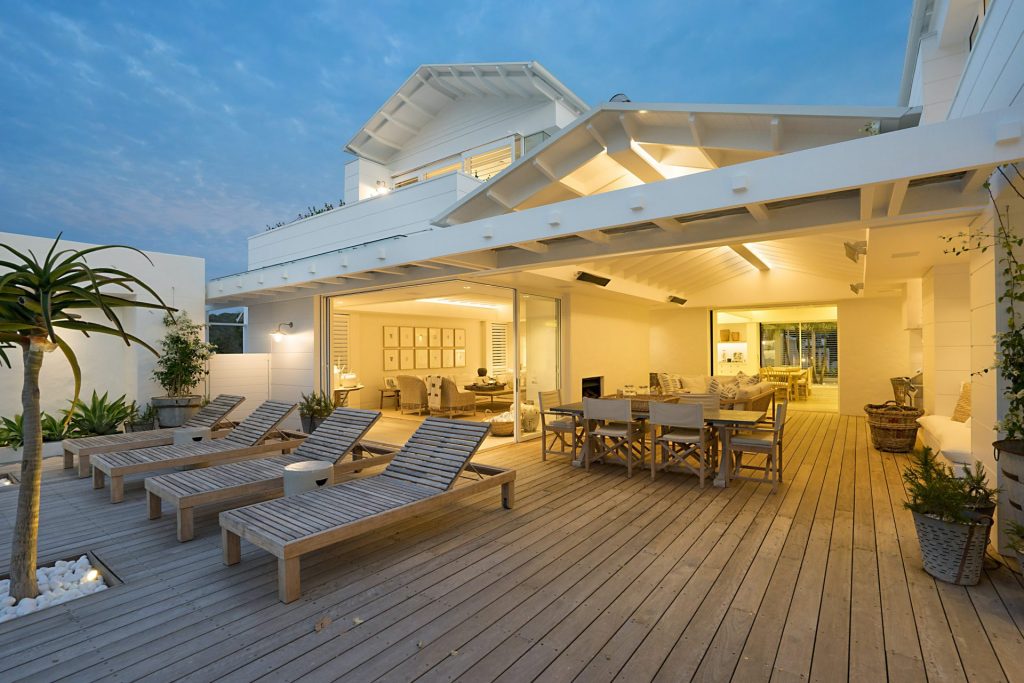
When it comes to ensuring the air in your home is clean and healthy, whole-house air purification systems are a game-changer. These systems use advanced technologies to filter out pollutants, allergens, and contaminants from the air, providing you and your family with fresh and pure air to breathe. Let’s take a closer look at four types of whole-house air filters and how they work.
1. Central Filtration Systems
Central filtration systems are the most common type of whole-house air purification systems. These systems are integrated into your home’s heating, ventilation, and air conditioning (HVAC) system. Central filters use a combination of a pre-filter, a high-efficiency particulate air (HEPA) filter, and an activated carbon filter to remove particles and odors from the air.
The pre-filter traps larger particles like dust, pet dander, and pollen, while the HEPA filter captures smaller particles such as mold spores and bacteria. The activated carbon filter adsorbs chemicals, gases, and odors. By filtering the air as it circulates through the HVAC system, central filtration systems ensure that every room in your home receives clean, purified air.
2. UV-C Germicidal Lamps
UV-C germicidal lamps are another effective whole-house air purification solution. These lamps use ultraviolet (UV) light with a wavelength of 254 nanometers to kill bacteria, viruses, and other microorganisms. UV-C light breaks down the DNA and RNA of these microorganisms, rendering them unable to reproduce and causing their death.
In whole-house air purification systems, UV-C lamps are typically installed in the HVAC system. As the air passes through the system, it is exposed to the UV-C light, neutralizing harmful microorganisms and improving indoor air quality.
3. Electrostatic Precipitators
Electrostatic precipitators are advanced air filtration systems that use electrostatic forces to remove airborne particles from the air. These systems work by charging particles with an electrical charge, causing them to become attracted to oppositely charged collection plates or grids. Once the particles are trapped on the collection plates, they can be easily removed by cleaning or washing the plates.
Electrostatic precipitators are highly effective at removing even the smallest particles, including smoke, dust, and pollen, from the air. They are often used in industrial settings but can also be integrated into whole-house air purification systems for residential use.
4. Photocatalytic Oxidation (PCO) Systems
Photocatalytic oxidation (PCO) systems are a cutting-edge type of whole-house air purification system. These systems use a combination of UV light and a photocatalyst to remove volatile organic compounds (VOCs), odors, and other airborne pollutants from the air.
In PCO systems, the UV light activates the photocatalyst, typically titanium dioxide, which produces catalytic reactions that break down the pollutants into harmless substances like carbon dioxide and water vapor. These systems are highly effective at neutralizing harmful compounds and are often used in environments where chemical pollutants are a concern.
Whole-house air purification systems come in various types, each with its own unique way of ensuring clean and healthy air in your home. From central filtration systems to UV-C germicidal lamps, electrostatic precipitators, and photocatalytic oxidation systems, there is a solution to meet every air purification need. By understanding how these systems work, you can make an informed decision and choose the best option to create a healthier living environment for you and your family.
Control Indoor Air Contaminants

Dust: The Silent Intruder
Dust is one of those sneaky invaders that can wreak havoc on our indoor air quality. It seems to find its way into every nook and cranny, settling on surfaces and causing allergic reactions for many people. But fear not, because whole-house air purification is here to tackle this silent intruder head-on.
With a whole-house air purification system, specially designed filters capture dust particles as small as 0.3 microns. These filters use a combination of mechanical and electrostatic principles to trap dust, preventing it from circulating throughout your home. You can say goodbye to the never-ending battle of constantly dusting your furniture and hello to cleaner, healthier indoor air.
Pollen: Nature’s Unwanted Visitor
Pollen, the bane of allergy sufferers everywhere, can find its way into our homes through open windows and doors. It clings to our clothes, hair, and pets, causing itchy eyes, sneezing, and respiratory issues. But don’t let pollen ruin your day – whole-house air purification can help keep it at bay.
By using high-efficiency filters, whole-house air purification systems can effectively capture pollen particles before they have a chance to settle in your home. These filters are designed to catch even the tiniest pollen particles, providing relief for allergy sufferers and ensuring cleaner, fresher indoor air.
Allergens: The Unseen Culprits
Allergens can come in many forms, from pet dander and dust mites to mold spores and cockroach droppings. These microscopic particles can trigger allergies and asthma, making life miserable for those affected. Luckily, whole-house air purification systems are equipped to tackle these unseen culprits.
Advanced filtration systems in whole-house air purifiers can capture allergens, effectively removing them from the air you breathe. By continuously cycling and filtering the air throughout your home, these systems ensure that allergens are kept to a minimum, providing relief for allergy sufferers and creating a healthier living environment.
Mold: The Unwelcome Guest
Mold thrives in damp and humid environments, making it a common problem in many homes. Apart from causing unsightly stains and odors, mold can also trigger allergies and respiratory issues. Whole-house air purification systems can help keep mold in check.
By utilizing powerful UV-C lights, whole-house air purification systems can kill mold spores and prevent them from reproducing. UV-C light is a proven method for destroying mold, bacteria, and viruses, ensuring that your home remains mold-free and your indoor air quality is at its best.
Bacteria: The Invisible Threat
Bacteria lurk in the most unexpected places, from kitchen countertops to bathroom surfaces. These invisible threats can cause illnesses and infections, posing a risk to our health. Fortunately, whole-house air purification systems have the power to combat these microscopic invaders.
Some whole-house air purifiers feature germicidal UV-C lights that destroy bacteria on contact. These lights emit short-wavelength ultraviolet radiation that disrupts the DNA of bacteria, rendering them harmless. With the continuous air circulation provided by whole-house systems, bacteria are less likely to linger in your home, creating a safer environment for you and your loved ones.
VOCs: The Chemical Intruders
Volatile Organic Compounds (VOCs) are chemicals that can be emitted by various products found in our homes, such as paints, cleaning agents, and furniture. These compounds can cause respiratory issues and contribute to indoor air pollution. Fortunately, whole-house air purification systems can help remove VOCs from your indoor air.
Whole-house air purifiers equipped with activated carbon filters are specifically designed to adsorb VOCs. These filters contain a large surface area with tiny pores that attract and trap VOC molecules, effectively removing them from the air. With a whole-house air purification system, you can breathe easier knowing that harmful chemicals are being eliminated from your home.
Whole-house air purification is a comprehensive solution for addressing common indoor air contaminants. From dust and pollen to mold, bacteria, and VOCs, these systems use advanced filtration and purification technologies to ensure cleaner, healthier indoor air. Say goodbye to respiratory issues and allergies, and hello to a fresh and safe living environment.
Related Reading
Considerations for Selecting the Right Whole House Air Purification System

When it comes to improving indoor air quality, selecting the right whole-house air purification system is crucial. Every residence has unique air quality challenges and needs, so it’s important to consider these factors when choosing a system. In this section, we will explore the various considerations that should be taken into account to ensure the selection of the most suitable whole-house air purification system for a specific home.
1. Size and Layout of the Residence
The size and layout of the residence play a significant role in determining the appropriate whole-house air purification system. Larger homes may require multiple units or a centralized system with sufficient coverage to effectively purify the air in all areas. In contrast, smaller homes or apartments may only need a single unit to achieve satisfactory air quality. Assessing the square footage and layout of the residence is essential in determining the system’s capacity and placement.
2. Air Quality Challenges
Identifying the specific air quality challenges within a residence is crucial in selecting the right whole-house air purification system. Common challenges include dust, pollen, pet dander, mold spores, and volatile organic compounds (VOCs). Different air purification technologies are designed to address specific pollutants. For instance, HEPA filters are effective at capturing particles as small as 0.3 microns, making them ideal for trapping allergens like pollen and pet dander. Activated carbon filters are excellent for removing VOCs and odors. Understanding the air quality challenges specific to a residence enables homeowners to choose a system that targets those pollutants effectively.
3. Allergies and Sensitivities
If there are individuals in the residence with allergies or sensitivities, it is important to select a whole-house air purification system that can effectively remove allergens and irritants from the air. HEPA filters are highly recommended in such cases due to their ability to capture allergens and provide relief to individuals with allergies or asthma. Additionally, consider the presence of individuals with respiratory or immune system conditions that may require a higher level of air purification.
4. Filter Maintenance and Replacement
Regular maintenance and filter replacements are essential for the optimal performance of whole-house air purification systems. Homeowners should consider the ease of filter maintenance and the cost and availability of replacement filters when selecting a system. Some systems have reusable filters that can be cleaned, while others require periodic filter replacements. Understanding the maintenance requirements and costs associated with different systems will help homeowners make an informed decision.
5. Energy Efficiency
Energy efficiency is an important consideration when selecting a whole-house air purification system. Look for systems with high energy efficiency ratings to minimize energy consumption and reduce utility bills. Energy Star certified systems are a reliable choice as they meet strict energy efficiency guidelines. Additionally, consider systems with variable speed fans that can adjust airflow based on the air quality needs, thereby optimizing energy usage.
6. Noise Level
Another factor to consider is the noise level of the whole-house air purification system. Some systems can be noisy, especially when operating at higher fan speeds. Consider the location of the system within the residence and choose a system that operates quietly, especially if it will be placed in a commonly used area such as the living room or bedroom. Look for systems that have noise reduction features or options for adjusting fan speed to minimize noise levels.
Selecting the right whole-house air purification system based on the specific air quality challenges and needs of a residence is crucial for ensuring clean and healthy indoor air. By considering factors such as the size and layout of the residence, air quality challenges, allergies and sensitivities, filter maintenance and replacement, energy efficiency, and noise level, homeowners can make an informed decision and invest in a system that will effectively purify the air and improve overall indoor air quality.
Installation Process and Maintenance
When it comes to installing a whole-house air purifier, the process is relatively straightforward. However, it is recommended to consult with a professional HVAC technician to ensure proper installation and integration with your existing heating and cooling system.
1. Assessment and Planning
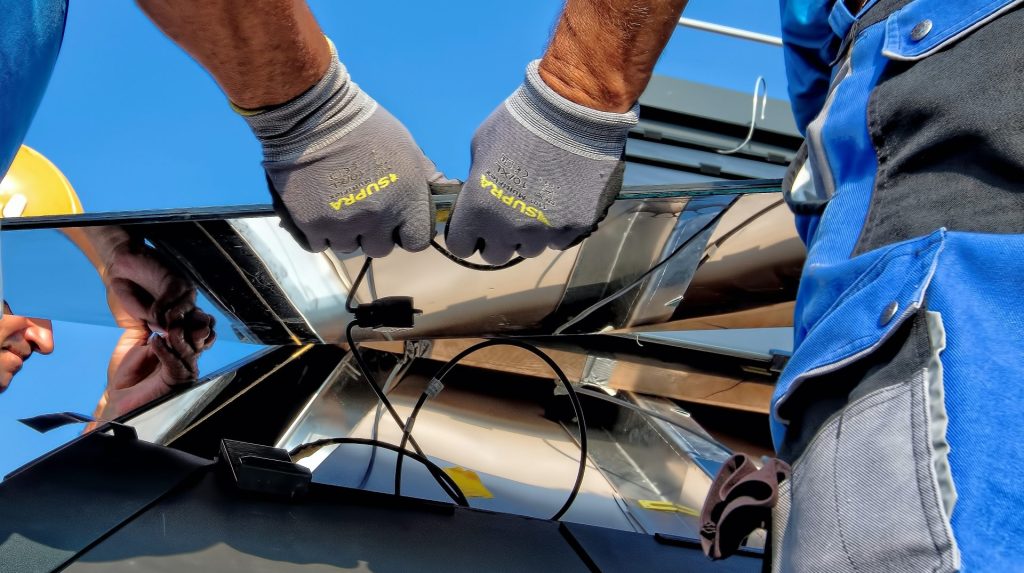
The first step is to assess the air quality in your home and determine the most suitable air purifier for your needs. Consider factors such as the size of your home, the number of occupants, and any specific indoor air quality concerns you may have.
2. System Integration
Once you’ve selected the right air purifier, the next step is to integrate it into your HVAC system. This typically involves connecting the air purifier to the return air ducts, where it can efficiently filter and purify the air as it circulates throughout your home.
3. Professional Installation
While some homeowners may attempt to install a whole-house air purifier themselves, it is recommended to enlist the help of a professional HVAC technician. They have the knowledge and expertise to ensure a proper and safe installation, minimizing the risk of any potential issues or damage.
Maintenance Requirements for Whole-House Air Purifiers: Keeping the Air Fresh and Clean
To ensure optimal performance and longevity of your whole-house air purifier, regular maintenance is essential. This includes filter replacements and cleaning procedures to keep the air in your home fresh and clean.
1. Filter Replacements
The most important aspect of maintaining a whole-house air purifier is regularly replacing the air filters. Filters play a crucial role in capturing and removing airborne pollutants, such as dust, pollen, pet dander, and mold spores. Over time, these filters become saturated and less effective, so it’s important to follow the manufacturer’s guidelines for filter replacement. This is typically recommended every three to six months, depending on the level of air pollution in your home.
2. Cleaning Procedures
In addition to filter replacements, regular cleaning is necessary to maintain the efficiency of your air purifier. This involves cleaning the external surfaces of the unit, including the casing and vents, to remove any dust or debris that may accumulate over time. A soft cloth or brush can be used, along with mild detergent if needed. It’s important to follow the manufacturer’s instructions for cleaning to avoid damaging any sensitive components.
3. Professional Servicing
While regular filter replacements and cleaning procedures are essential, it’s also wise to schedule periodic professional servicing for your whole-house air purifier. A licensed HVAC technician can inspect the unit, clean internal components, and ensure everything is functioning optimally. They can also address any potential issues or concerns that may arise, prolonging the lifespan of your air purifier and maintaining the quality of your indoor air.
Installing a whole-house air purifier involves assessing your air quality, integrating the unit with your HVAC system, and enlisting the help of a professional technician. Regular maintenance, including filter replacements and cleaning procedures, is necessary to ensure optimal performance and clean indoor air. By following these guidelines, you can enjoy the benefits of a healthier and more comfortable living environment.
Energy Efficiency & Impact on HVAC Energy Consumption
When it comes to creating a healthy and comfortable home environment, whole-house air purification systems have gained significant popularity. These systems not only improve indoor air quality but also have a direct impact on the overall energy consumption of your HVAC (Heating, Ventilation, and Air Conditioning) system. In this section, we will explore the energy efficiency of whole-house air purification systems and understand how they affect the energy consumption of your HVAC system.
The Importance of Energy Efficiency in Whole-House Air Purification Systems
Energy efficiency is a crucial aspect to consider when evaluating any home appliance or system. With rising energy costs and environmental concerns, homeowners are increasingly seeking ways to reduce their energy consumption. This is where energy-efficient whole-house air purification systems come into play.
By choosing an energy-efficient system, homeowners can enjoy cleaner air while minimizing their ecological footprint and saving on energy bills. These systems are designed to operate optimally, reducing unnecessary energy waste and maximizing the performance of the system as a whole.
Energy Consumption of Whole-House Air Purification Systems
Whole-house air purification systems typically operate in conjunction with your HVAC system. They are integrated into the existing ductwork, allowing for the purification of air throughout your entire home. However, it is important to note that these systems require electricity to function.
The energy consumption of whole-house air purification systems varies depending on various factors such as the size of the system, the type of filtration technology used, and the air quality requirements of your home. Generally, these systems are designed to be energy efficient, with many manufacturers incorporating advanced technologies to minimize energy consumption.
To ensure energy efficiency, it is advisable to choose a system that is ENERGY STAR certified. These systems meet strict energy efficiency guidelines set by the U.S. Environmental Protection Agency (EPA), ensuring that they consume less energy without compromising performance.
Impact on Overall HVAC Energy Consumption
The integration of a whole-house air purification system into your HVAC system can have both positive and negative impacts on overall energy consumption.
On the positive side, these systems help improve the efficiency of your HVAC system by reducing the load on the air filters. By removing airborne contaminants before they reach the filters, whole-house air purification systems help prolong the lifespan of your HVAC filters. This reduces the need for frequent filter replacements, resulting in energy savings.
Furthermore, by capturing and removing allergens, pollutants, and other harmful particles, whole-house air purification systems prevent these contaminants from circulating within your home. This reduces the strain on your HVAC system, allowing it to operate more efficiently and consume less energy.
However, it is essential to choose a properly sized whole-house air purification system for your home. Oversized systems may consume more energy than necessary, leading to increased energy consumption. Consulting with a professional HVAC technician or using online calculators can help determine the appropriate system size for your specific needs.
Whole-house air purification systems are designed to be energy efficient, offering homeowners cleaner air while minimizing energy consumption. By choosing an ENERGY STAR certified system and ensuring proper sizing, you can enjoy the benefits of improved indoor air quality without compromising on energy efficiency. Make your home a healthier and more energy-efficient living space with a whole-house air purification system.
Potential Drawbacks & How To Mitigate Them
The benefits of whole house air purification outweighs the drawbacks, but it’s important to consider both pros and cons before making a decision. Here are some things to consider:
1. Initial Cost and Installation
Installing a whole-house air purification system can involve a significant upfront cost. The equipment itself, along with professional installation, can be a financial burden for some homeowners. Additionally, the installation process may require modifications to the existing HVAC system, which can further increase the cost.
How To Mitigate This
Homeowners can mitigate the initial cost by researching different brands and models, comparing prices, and finding a system that fits their budget without compromising on quality. They can also consider financing options or explore potential rebates or incentives that may be available for energy-efficient home improvements.
2. Ongoing Maintenance and Filter Replacement
Like any system, whole-house air purifiers require regular maintenance to ensure optimal performance. The filters in these systems need to be replaced periodically to maintain their efficiency in capturing pollutants. Neglecting maintenance and filter replacement can result in decreased effectiveness and increased energy consumption.
How To Mitigate This
Homeowners should make a habit of checking the manufacturer’s recommendations for filter replacement frequency and follow through accordingly. They can set reminders or sign up for automatic filter replacement programs offered by some manufacturers to ensure timely replacements. Regular maintenance, such as cleaning the system’s components, should also be performed as recommended.
3. Noise Level
Some whole-house air purification systems can produce noise while in operation. This can be a concern for homeowners who prefer a quiet and peaceful living environment. The noise level can vary depending on the specific model and its settings.
How To Mitigate This
Homeowners should research and select a system that offers low noise levels or includes noise-reducing features. Some systems come with variable speed settings, allowing users to adjust the fan speed to minimize noise without sacrificing air purification effectiveness. Additionally, locating the system in a dedicated mechanical room or basement can help reduce the noise impact on occupied areas of the house.
4. Limited Effectiveness Against Certain Pollutants
While whole-house air purification systems are highly effective at removing a wide range of indoor pollutants, they may have limitations in dealing with certain types of contaminants. For example, gaseous pollutants like volatile organic compounds (VOCs) may require additional air cleaning technologies or specific filters to be effectively eliminated.
How To Mitigate This
Homeowners can enhance the effectiveness of whole-house air purification systems by using complementary air purifiers that are specifically designed for targeting gaseous pollutants. These additional units can be placed strategically in areas with high concentrations of VOCs, such as near sources of household chemicals or in rooms where smoking occurs.
5. Energy Consumption
Whole-house air purification systems rely on the HVAC system to circulate and filter the air throughout the house. This can result in increased energy consumption, especially if the system runs continuously or at high fan speeds.
How To Mitigate This
Homeowners can manage energy consumption by selecting energy-efficient models and adjusting the system’s settings based on their specific needs. Using programmable thermostats can help optimize the system’s operation and reduce unnecessary running time. Additionally, regular maintenance and filter replacement can ensure the system operates efficiently, minimizing energy waste.
Whole House Air Purification Promotes Sustainability

Clean air is essential for a healthy and productive living environment. As the world becomes more conscious about sustainable and green building practices, the importance of indoor air quality cannot be overstated. Whole-house air purification systems offer an effective solution to improve air quality while aligning with these environmentally friendly practices. Let’s delve into why whole-house air purification is a game-changer for sustainable and green building.
1. Reducing Environmental Footprint
Whole-house air purification systems contribute to sustainable building practices by significantly reducing the environmental footprint associated with indoor air quality management. Unlike portable air purifiers, which may require multiple units to cover an entire house, a whole-house system minimizes energy consumption and waste by efficiently cleaning the air throughout the entire home with a single unit. This energy efficiency translates into lower greenhouse gas emissions, making it an environmentally responsible choice.
2. Minimizing Chemical Exposure
Traditional building materials and household products often release harmful chemicals into the air, known as volatile organic compounds (VOCs). These chemicals can have adverse health effects, contributing to respiratory issues, allergies, and even long-term illnesses. Whole-house air purifiers equipped with activated carbon filters can effectively remove VOCs from the air, providing a safer environment for occupants. By minimizing chemical exposure, these systems promote green building practices that prioritize the health and well-being of residents.
3. Energy Efficiency and Lower Operating Costs
Sustainable building practices emphasize energy efficiency and reduced energy consumption. Whole-house air purification systems align perfectly with these principles. By integrating with the existing HVAC system, these systems use the existing ductwork to distribute purified air throughout the entire house. This integration not only eliminates the need for additional energy-consuming units but also ensures that the air purification process is seamlessly integrated into the home’s overall energy management. As a result, operating costs remain low, and energy efficiency is maximized.
4. Preservation of Natural Resources
Traditional air purification methods often involve the use of disposable filters that need frequent replacement. Whole-house systems, on the other hand, typically utilize reusable filters that can be easily cleaned and reused, reducing the demand for new filters. This practice aligns with sustainable building practices by preserving natural resources and minimizing waste generation. Additionally, some whole-house air purifiers come with washable electronic filters, further reducing the need for disposable filters and promoting green living.
5. Long-Term Health Benefits
Ensuring the long-term health and well-being of occupants is a crucial aspect of sustainable and green building practices. Whole-house air purification systems help eliminate allergens, dust, mold spores, and other airborne contaminants, providing a healthier indoor environment. Improved air quality can lead to reduced respiratory issues, allergies, and other health problems, promoting a sustainable and healthy lifestyle for the occupants.
A Homeowner’s Experience With Blade Air’s Whole House Air Purification Systems
In today’s world, indoor air quality is a growing concern for homeowners. Poor air quality can lead to a range of health issues, including allergies, asthma, and respiratory problems. Our client, a young family living in a bustling city, found themselves dealing with these very issues. They were desperate to find a solution that would provide clean and healthy air for their home. That’s when they discovered Blade Air’s whole-house air purification solutions.
The Initial Problem: A Home Filled with Allergens and Pollutants
Our client’s home was located in a heavily populated area, where pollution levels were high. They noticed that their family members were constantly suffering from allergies and respiratory issues. They had tried various air purifiers and filters, but nothing seemed to make a significant difference. They needed a more comprehensive solution that would address the root cause of their indoor air quality problems.
Discovering Blade Air’s Whole-House Air Purification Solutions
After extensive research, our client stumbled upon Blade Air’s whole-house air purification solutions. They were intrigued by the promises of a system that could purify the air in their entire home, rather than just a single room. They decided to reach out to Blade Air for a consultation.
The Blade Air Consultation: Customizing a Solution for Their Home
During the consultation, Blade Air performed a thorough assessment of our client’s home. They took into account factors such as the size of the home, the number of occupants, and the specific air quality concerns. Based on this information, Blade Air customized a whole-house air purification solution that would meet our client’s unique needs.
The Installation: Transforming Their Home into a Haven of Clean Air
Blade Air’s expert technicians installed the whole-house air purification system in our client’s home with utmost precision. The system was seamlessly integrated into their existing HVAC system, ensuring that every room in the house would receive purified air. Our client was impressed with the professionalism and efficiency of the installation process.
The Transformation: Breathing Easy and Enjoying a Healthy Home
After the installation, our client noticed an immediate improvement in the air quality of their home. The system effectively removed allergens, dust, and other pollutants from the air, providing a clean and healthy living environment. Their family members experienced a significant reduction in allergy symptoms and respiratory issues. They could finally breathe easy and enjoy their home without worrying about the harmful effects of poor indoor air quality.
Long-Term Benefits: The Gift of Clean Air for Years to Come
Blade Air’s whole-house air purification system not only provided immediate relief but also offered long-term benefits for our client’s home. The system is low maintenance and energy-efficient, ensuring that our client can enjoy clean air for years to come without any hassle. They no longer need to rely on individual air purifiers or filters, saving them time and money in the long run.
Our client’s experience with Blade Air’s whole-house air purification solutions showcases the transformative power of clean air. By addressing the root cause of indoor air quality issues, Blade Air was able to provide our client with a comprehensive solution that improved their family’s health and well-being. With Blade Air’s system in place, our client’s home has become a haven of clean air, allowing them to live comfortably and breathe easy.
Related Reading
Explore Blade Air’s Innovative Whole House Air Purification Solutions To Protect Yourself
Here at Blade Air, we are passionate about providing innovative air purification solutions across the USA and Canada. With a wide range of products and technologies, we are committed to ensuring clean and healthy air for all.
Our Solutions for Every Need
At Blade Air, we understand that each space has unique air quality requirements. That’s why we offer a comprehensive range of air purification solutions to cater to various industries and environments. Whether you need whole-building purification, portable solutions, or specialized odor control, we have you covered.
Harnessing the Power of Technology
When it comes to air purification, we believe in the power of cutting-edge technology. We offer a variety of advanced technologies, including UV-C, HEPA filters, and our very own Blade Air Pro Series. This innovative electromagnetic technology sets us apart from the competition, providing highly effective and efficient purification.
Addressing Different Industries
While our solutions are suitable for all industries, we particularly excel in commercial, industrial, education, senior living, healthcare, and horticulture facilities. We understand the unique challenges each industry faces and have tailored our solutions to meet their specific needs.
Creating a Healthy Environment
At Blade Air, we are dedicated to creating a healthy and safe environment for everyone. Our whole-building air purification solutions are designed to eliminate harmful particles, allergens, and contaminants, ensuring clean air for occupants. By investing in our IAQ solutions, you can provide a space that promotes well-being and productivity.
Take Control of Odor Issues
Unpleasant odors can be a major concern in various settings, from commercial kitchens to waste management facilities. Our odor control solutions, including carbon filters, effectively neutralize odors, providing a fresh and clean environment for both employees and customers.
Learn More About Our Solutions
If you’re ready to take your air purification to the next level, we invite you to explore our IAQ solutions page. Discover how our whole-building solutions can transform your space and improve indoor air quality. Additionally, learn more about our UV-C and PSF products, which offer targeted purification and sanitization.
At Blade Air, we are committed to providing top-notch air purification solutions that prioritize health and well-being. Trust us to deliver the clean air your space deserves. Contact us today to find out more or schedule a consultation.

